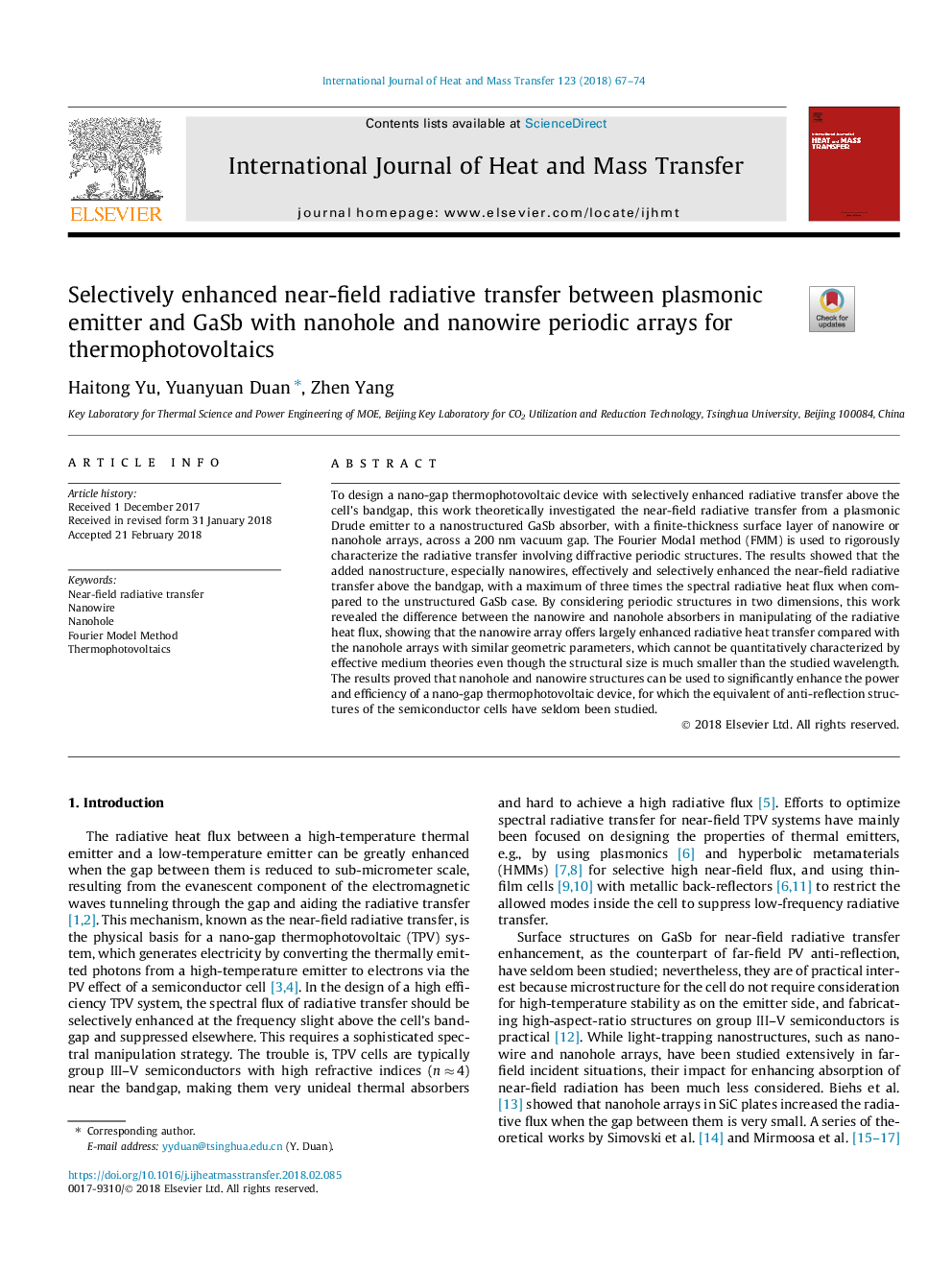| Article ID | Journal | Published Year | Pages | File Type |
|---|---|---|---|---|
| 7054198 | International Journal of Heat and Mass Transfer | 2018 | 8 Pages |
Abstract
To design a nano-gap thermophotovoltaic device with selectively enhanced radiative transfer above the cell's bandgap, this work theoretically investigated the near-field radiative transfer from a plasmonic Drude emitter to a nanostructured GaSb absorber, with a finite-thickness surface layer of nanowire or nanohole arrays, across a 200â¯nm vacuum gap. The Fourier Modal method (FMM) is used to rigorously characterize the radiative transfer involving diffractive periodic structures. The results showed that the added nanostructure, especially nanowires, effectively and selectively enhanced the near-field radiative transfer above the bandgap, with a maximum of three times the spectral radiative heat flux when compared to the unstructured GaSb case. By considering periodic structures in two dimensions, this work revealed the difference between the nanowire and nanohole absorbers in manipulating of the radiative heat flux, showing that the nanowire array offers largely enhanced radiative heat transfer compared with the nanohole arrays with similar geometric parameters, which cannot be quantitatively characterized by effective medium theories even though the structural size is much smaller than the studied wavelength. The results proved that nanohole and nanowire structures can be used to significantly enhance the power and efficiency of a nano-gap thermophotovoltaic device, for which the equivalent of anti-reflection structures of the semiconductor cells have seldom been studied.
Keywords
Related Topics
Physical Sciences and Engineering
Chemical Engineering
Fluid Flow and Transfer Processes
Authors
Haitong Yu, Yuanyuan Duan, Zhen Yang,
